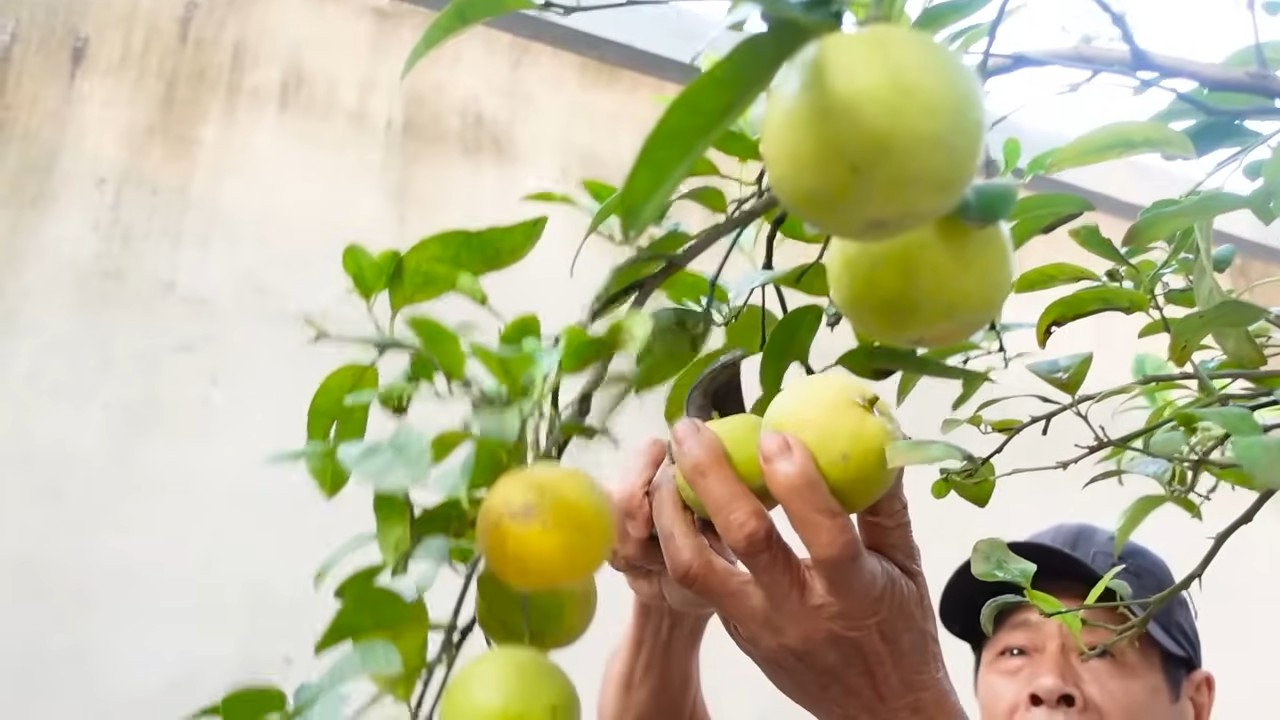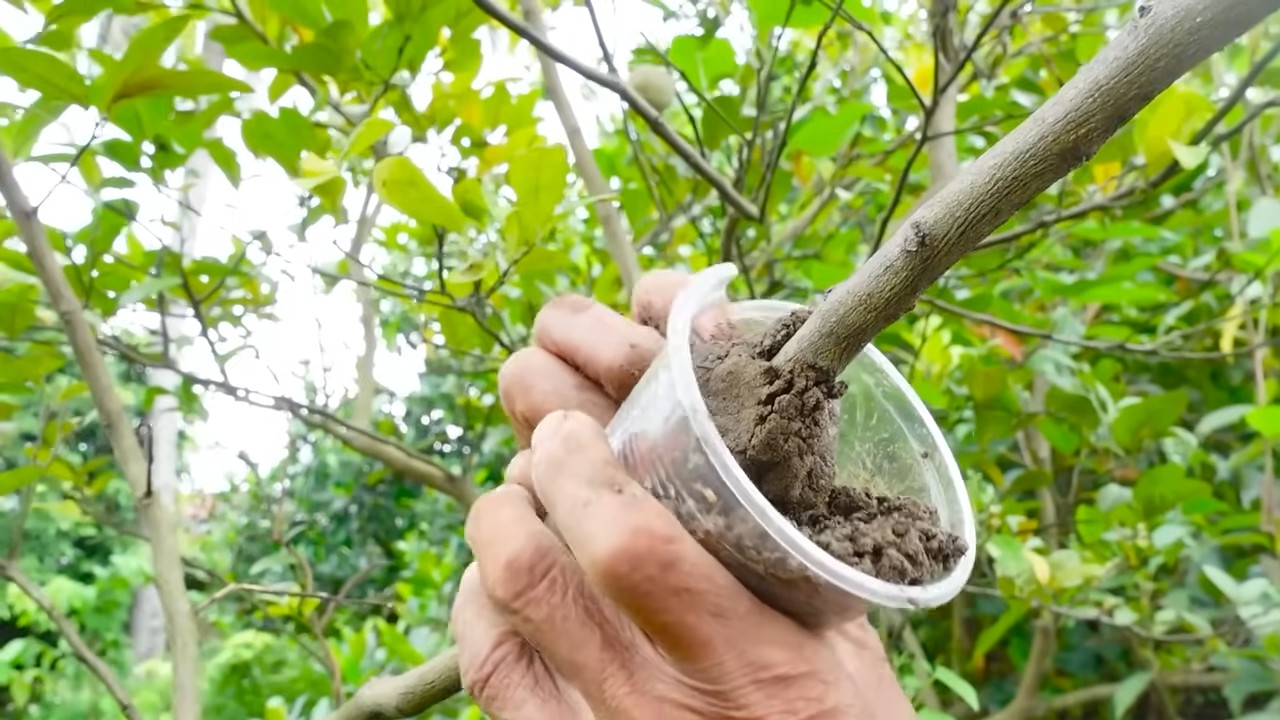Grow lemons year round? Yes, you read that right! Imagine the zesty aroma of freshly picked lemons filling your kitchen, even in the dead of winter. No more relying on expensive, store-bought lemons when you can have your own supply, bursting with flavor and sunshine, right at your fingertips. This isn’t just a pipe dream; it’s an achievable reality with a few clever DIY tricks and hacks.
For centuries, citrus fruits, including lemons, have held a special place in various cultures. From ancient medicinal uses to culinary delights, lemons have been prized for their versatility and health benefits. Historically, growing lemons was often limited to warmer climates, but thanks to innovative techniques, we can now extend the growing season and enjoy these vibrant fruits regardless of our geographical location.
Why do you need these DIY tricks? Well, beyond the sheer joy of harvesting your own homegrown lemons, there are practical advantages. Think about reducing your grocery bills, minimizing your carbon footprint by avoiding transportation, and having access to lemons free from potentially harmful pesticides. Plus, let’s be honest, there’s something incredibly satisfying about nurturing a plant and reaping the rewards of your labor. I’m excited to share some simple, yet effective, methods that will empower you to grow lemons year round, transforming your home into a citrus oasis. Let’s get started!

Growing Your Own Lemons Year-Round: A Comprehensive DIY Guide
Hello, dear garden friends! Have you ever wished you could pick fresh, sun-ripened lemons directly from your own tree all year round? Me too! And after some experimentation and learning, I’ve figured out how to make it happen even in our latitudes, even if we don’t live in a tropical paradise. This guide is for everyone who craves the zesty taste of homegrown lemons, whether you have a garden, a balcony, or just a sunny windowsill. Let’s dive into the world of lemon growing together!
The Basics: What Lemons Need to Thrive
Before we get started, it’s important to understand what lemons really need to be happy and productive. Here are the most important factors:
- Sun: Lemons love the sun! They need at least 6-8 hours of direct sunlight per day. The more, the better.
- Warmth: Lemons are sensitive to frost. Temperatures below freezing can harm them. If you live in an area with cold winters, you’ll need to plant your lemon tree in a pot so you can bring it indoors in the winter.
- Good Drainage: Lemons hate standing in water. The soil must be well-drained so the roots don’t rot.
- Nutrients: Lemons are hungry plants. They need regular fertilization to stay healthy and bear fruit.
- Protection from Wind: Strong wind can damage the blossoms and young fruits. A sheltered location is ideal.
Choosing the Right Variety: Which Lemon is Right for You?
There are many different lemon varieties, and not all are equally well-suited for growing in pots or in colder climates. Here are some of my favorites:
- Meyer Lemon: This variety is particularly popular because it is relatively cold-tolerant and bears fruit early. The fruits are slightly sweeter and less acidic than traditional lemons.
- Eureka Lemon: A classic lemon with a sour taste. It is well-suited for growing in pots but requires more protection from frost.
- Lisbon Lemon: Similar to the Eureka lemon, but a bit more robust and resistant to diseases.
- Improved Meyer Lemon: An improved version of the Meyer lemon that is even more resistant to diseases.
I personally recommend the Meyer lemon for beginners, as it is the easiest to care for and reliably bears fruit.
Step-by-Step Guide: How to Plant Your Lemon Tree
Now, let’s get down to business! Here is a detailed guide on how to plant your own lemon tree:
- Choosing the Right Pot: Choose a pot with a diameter of at least 45 cm and sufficient drainage holes. A terracotta pot is ideal as it is breathable and wicks away excess moisture.
- Preparing the Right Soil: Lemons need well-draining, slightly acidic soil. Mix high-quality potting soil with some sand or perlite to improve drainage. I like to use a mixture of 60% potting soil, 20% sand, and 20% perlite.
- Planting the Lemon Tree: Fill the pot with the prepared soil. Make a hole in the center large enough to accommodate the root ball of the lemon tree. Carefully place the tree in the hole and fill the pot with soil. Make sure the root ball is completely covered, but the trunk is not sitting too deep in the soil.
- Watering: Water the lemon tree thoroughly until water runs out of the drainage holes. Let the soil dry out slightly between waterings.
- Fertilizing: Fertilize the lemon tree regularly with a citrus fertilizer. Follow the instructions on the package. I fertilize my tree every 2-3 weeks during the growing season (spring and summer) and reduce fertilization in the winter.
- Location: Place the lemon tree in a sunny location. If you bring it indoors for the winter, place it by a sunny window.
- Pruning: Prune the lemon tree regularly to maintain its shape and encourage fruit production. Remove dead or diseased branches.
Care: How to Keep Your Lemon Tree Healthy and Happy
Caring for a lemon tree is not difficult, but there are a few things you should keep in mind:
- Watering: As mentioned, it’s important to water the lemon tree correctly. Let the soil dry out slightly between waterings. Overwatering can lead to root rot.
- Fertilizing: Lemons need regular fertilization to stay healthy and produce fruit. Use a citrus fertilizer and follow the instructions on the package.
- Pests and Diseases: Lemons can be affected by various pests and diseases. Watch for signs of infestation, such as aphids, spider mites, or scale insects. Treat the tree with a suitable insecticide or fungicide if necessary. I prefer natural remedies like neem oil.
- Overwintering: If you live in an area with cold winters, you need to bring your lemon tree indoors for the winter. Place it by a sunny window and reduce watering. Make sure the humidity is not too low, as this can cause leaf drop. You can increase humidity by regularly spraying the tree with water or setting up a humidifier.
- Repotting: When the lemon tree becomes too large for its pot, you will need to repot it. Choose a pot that is slightly larger than the previous one. The best time to repot is in the spring.
Challenges and Solutions: What to Do When Things Go Wrong
Sometimes, not everything goes according to plan. Here are some common problems and how you can solve them:
- Leaf Drop: Leaf drop can have various causes, such as overwatering, underwatering, too little light, low humidity, or pests. Carefully examine the tree to find the cause and fix the problem.
- No Fruit: If your lemon tree is not fruiting, it could be due to too little sun, not enough fertilizer, or insufficient pollination. Make sure the tree gets enough sun, fertilize it regularly, and hand-pollinate the flowers if necessary.
- Yellow Leaves: Yellow leaves can be a sign of a nutrient deficiency. Fertilize the tree with a citrus fertilizer.
- Pests: Treat the tree with a suitable insecticide or fungicide as needed.
Additional Tips and Tricks for Lemon Growing
Here are a few more tips that can help you successfully grow lemons:
Patience: Lemon trees need time to grow and bear fruit. Be patient and don’t give up.
Pollination: Lemons are self-pollinating, but hand-pollination can improve fruit production. Use a small brush to transfer pollen from one flower to another.
Mulching: Mulch the soil around the lemon tree to retain moisture and suppress weeds.
Regular Inspection: Check the tree regularly for pests and diseases. The sooner you detect problems, the easier they are to fix.

Conclusion
So, there you have it! Growing lemons year-round might seem like a citrus dream reserved for sun-drenched orchards, but with this simple DIY trick, it’s entirely within your reach, regardless of your climate. We’ve shown you how to create a microclimate that nurtures your lemon tree, protecting it from the harsh realities of winter and maximizing its fruit production throughout the year.
Why is this a must-try? Because fresh, homegrown lemons are simply unparalleled. The vibrant aroma, the intense flavor, and the satisfaction of harvesting your own fruit are experiences that store-bought lemons just can’t replicate. Imagine zesting a lemon you nurtured yourself into your favorite lemon bars, squeezing its juice into a refreshing summer lemonade, or adding a slice to your evening tea. The possibilities are endless!
But the benefits extend beyond just taste. Growing your own lemons is also a sustainable and eco-friendly choice. You’ll reduce your reliance on commercially grown produce, minimize transportation emissions, and avoid the pesticides and chemicals often used in large-scale agriculture. Plus, caring for a lemon tree can be a therapeutic and rewarding hobby, connecting you with nature and providing a sense of accomplishment.
Don’t be afraid to experiment with variations on this DIY trick. If you live in an area with particularly harsh winters, consider adding extra insulation to your enclosure, such as bubble wrap or blankets. You could also incorporate a small, thermostatically controlled heater to provide supplemental warmth during the coldest nights. For those in warmer climates, focus on providing adequate ventilation to prevent overheating during the summer months. A shade cloth can also be beneficial in protecting your tree from intense sunlight.
Another variation to consider is the type of container you use. While a large pot is ideal, you can also use a raised garden bed or even a repurposed container like a large plastic tub. Just make sure it has adequate drainage to prevent root rot. The key is to create a stable and protected environment that allows your lemon tree to thrive.
We are confident that with a little effort and attention, you can successfully grow lemons year-round using this DIY method. It’s a rewarding project that will bring you years of enjoyment and a constant supply of fresh, flavorful lemons.
Now, it’s your turn! We encourage you to give this DIY trick a try and experience the joy of harvesting your own lemons. Don’t be afraid to get creative and adapt the method to suit your specific climate and growing conditions. And most importantly, share your experiences with us! We’d love to hear about your successes, your challenges, and any tips or tricks you discover along the way. Post photos of your lemon trees, share your favorite lemon recipes, and let’s create a community of lemon-growing enthusiasts! Let us know if you were able to **grow lemons year round** with our tips.
Frequently Asked Questions (FAQ)
Q: What type of lemon tree is best for growing in a container?
A: Meyer lemons are generally considered the best choice for container growing due to their smaller size and tolerance for cooler temperatures. They also tend to be more productive than other lemon varieties. Other good options include Improved Meyer, Lisbon, and Eureka lemons. When selecting a tree, be sure to choose one that is grafted onto a dwarfing rootstock, as this will help control its size and make it more manageable in a container.
Q: How much sunlight does my lemon tree need?
A: Lemon trees need at least 6-8 hours of direct sunlight per day to thrive and produce fruit. If you’re growing your tree indoors, place it near a south-facing window where it will receive the most sunlight. You may also need to supplement with artificial grow lights, especially during the winter months. Rotate the tree regularly to ensure that all sides receive adequate light.
Q: What type of soil should I use for my lemon tree?
A: Lemon trees prefer well-draining soil that is slightly acidic. A good potting mix for citrus trees should consist of a blend of peat moss, perlite, and vermiculite. Avoid using heavy clay soils, as they can retain too much moisture and lead to root rot. You can also amend your soil with compost or other organic matter to improve its drainage and fertility.
Q: How often should I water my lemon tree?
A: Water your lemon tree deeply whenever the top inch of soil feels dry to the touch. Avoid overwatering, as this can lead to root rot. During the summer months, you may need to water your tree more frequently, especially if it’s exposed to hot, dry conditions. In the winter, reduce watering frequency as the tree’s growth slows down. Always check the soil moisture before watering to ensure that your tree needs it.
Q: How often should I fertilize my lemon tree?
A: Lemon trees are heavy feeders and require regular fertilization to produce abundant fruit. Fertilize your tree every 4-6 weeks during the growing season (spring and summer) with a citrus-specific fertilizer. Follow the instructions on the fertilizer label carefully to avoid over-fertilizing, which can damage the tree. In the winter, reduce or eliminate fertilization as the tree’s growth slows down.
Q: How do I protect my lemon tree from frost?
A: Frost protection is crucial for growing lemons year-round, especially in colder climates. The DIY enclosure described in this article provides a good level of protection. In addition to the enclosure, you can also wrap the trunk of the tree with burlap or blankets to insulate it from the cold. If a hard freeze is expected, consider moving the tree indoors to a garage or shed. You can also use string lights (not LED) to generate a small amount of heat within the enclosure.
Q: How do I prune my lemon tree?
A: Pruning helps to maintain the shape of your lemon tree, improve air circulation, and encourage fruit production. Prune your tree in late winter or early spring, before new growth begins. Remove any dead, damaged, or crossing branches. You can also prune to shape the tree and control its size. Avoid pruning too heavily, as this can reduce fruit production.
Q: What are some common pests and diseases that affect lemon trees?
A: Common pests that can affect lemon trees include aphids, scale, spider mites, and mealybugs. These pests can be controlled with insecticidal soap or horticultural oil. Common diseases include root rot, citrus canker, and leaf spot. Preventative measures, such as proper watering and fertilization, can help to reduce the risk of disease. If you suspect that your tree has a disease, consult with a local nursery or agricultural extension office for advice.
Q: How long does it take for a lemon tree to produce fruit?
A: Grafted lemon trees typically begin to produce fruit within 1-3 years of planting. Seed-grown trees may take 5-7 years to produce fruit. The amount of fruit produced will depend on the variety of lemon, the age of the tree, and the growing conditions. With proper care, your lemon tree should provide you with a bountiful harvest for many years to come.
Q: Can I grow lemons indoors year-round without an enclosure?
A: While it’s possible to grow lemons indoors without an enclosure, it can be more challenging, especially in climates with significant temperature fluctuations. The enclosure helps to create a more stable and controlled environment, protecting the tree from drafts, temperature extremes, and pests. If you choose to grow your lemon tree indoors without an enclosure, be sure to provide it with plenty of sunlight, proper watering, and regular fertilization. You may also need to monitor it closely for pests and diseases.




Leave a Comment